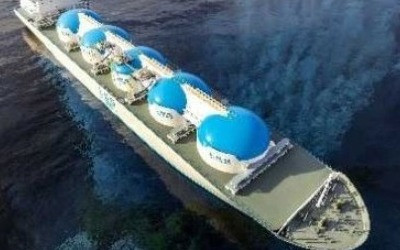October 10, 2017

Petroplan finds new jobs for energy industry professionals every day, with many of these placements involving global relocation for people and their families. For many in the oil, gas and energy employment market, this means ensuring a new opportunity works for their family, in the same way most of us must consider the impact of a new career challenge.
During this week of World Mental Health Day, we thought we would add to the conversation about work-life balance. It may seem unusual coming from a recruiter supporting an industry that requires frequent global relocation, however, the experience we have in this sector means we have much to say on the subject. The insights we have shared from our candidates and contractors may help if you are having a tough day away from home or if you are deciding on a role or indeed if you have someone close to you that works in this rewarding but often demanding sector.
In this article, we are looking at raising awareness of the impact on families of these economic drivers and, of course, the great career opportunities that still exist in the industry.
So, you’ve snagged that great job with a career-making employer but you must relocate – how do you feel and what questions do you need to ask?
At Petroplan, recruiters are tuned into the motivations of candidates – as well as to the candidate’s suitability for a role in terms of skill and cultural fit. Motivations often stem from key drivers for success and happiness – with family and close relationships a key consideration. Since the downturn in 2014, industry professionals have undergone huge amounts of stress through a scarcity of career opportunities, the threat of job losses and pay cuts. Added to this is the frequent requirement to relocate for work – which can sometimes lead to people making choices that are not in their best interests at a personal level.
The questions a recruiter may ask to check that someone understands the impact on family life of relocating for work may include these:
- Will your partner and family relocate?
- Have you ever discussed moving to a new country? Or have you done this before?
- What age are the children in your family; will this affect their place of study?
- How long have you worked away from home before?
- Do you understand the placement terms around accommodation and additional benefits? If the placement does not include either of these, is it still attractive?
- If you decide to relocate for contracted periods, how will this affect your home life?
- If you have other dependents (e.g. parents or siblings) as well as a partner and children, are they all comfortable with the change?
- Will you be likely to need to move location regularly?
- How will the move affect your tax liabilities or visa situation?
- What will you do if it doesn’t work out?
There are many more questions related to the location, type of work and length of contract – but the fundamental question is – will you and your family be able to manage the change/your absence?
Finding the right balance of communication
In our previous blogs about mental health, we touched on the isolation that industry professionals can feel when away from home, the pressure to quickly adjust to new teams, and the need for communication. It is essential to seek help before anxiety takes its toll, and to help others wherever possible.
I am writing this blog from first-hand experience as someone with a family member working in the sector. Many workers and their families see the mobile nature of oil and gas careers not as a sacrifice, but rather a natural part of working in the sector. Nevertheless, whether you are just starting out or a seasoned industry professional, this aspect of the job can place undue stress on those involved.
Keep in touch
If you are on rotation or a short-term contract, it can mean less upheaval for the family if they remain resident in your country of origin. The contractor and their family must be prepared for moments when the distance can be tough, particularly for everyday decisions and special occasions. The availability of technology, even in the remotest of destinations, means it is now much easier to stay in touch with loved ones and events at home.
It can also help to agree a schedule of contact via communication platforms such as Skype, WhatsApp, Facetime and – cost permitting – by phone. Whatever the method, staying in touch regularly helps keep all parties in tune and can reduce the anxieties caused by being far away from loved ones.
Many mobile professionals are open to full-time relocation, with destinations such as the Middle East and South Africa popular as expatriate residential options. However, with the cost of living rising in many parts of the world, some of these options have become less attractive, as the daily lives of industry workers and their families are directly impacted by economic considerations.
Key considerations in a move overseas will typically be the standard of living presented by the location, accommodation options and the quality of local schooling and healthcare. This level of commitment to an employer and a new location should not be taken lightly. Families may also have concerns about safety and security and, of course, the transition back to their home country when the work ends.
Stay open-minded about the adventure but don’t be afraid to ask for a reality check
If you and your family take this opportunity, it can be a great experience but it is important to do your homework on what to expect. Many locations offer a great expatriate network where you can share your experiences with people in the same situation; getting involved in the local community will definitely help with transition.
For the most part, a career in the energy sector is a rewarding lifestyle choice. Work with your recruiter to get the full picture before committing to a complete change – and check with your family on how it will impact them. Talking to people who have already worked and lived abroad is also a really good time investment. Many employers can put you in touch with colleagues prior to joining to help with any advice you may need, whether it is just for the professional or the whole family.
For more information on working and living abroad visit:
Written by Heather Nickson






You can also use your social account to sign in. First you need to:
To connect your social account you must Acknowledge the Terms & Conditions and Privacy Policy